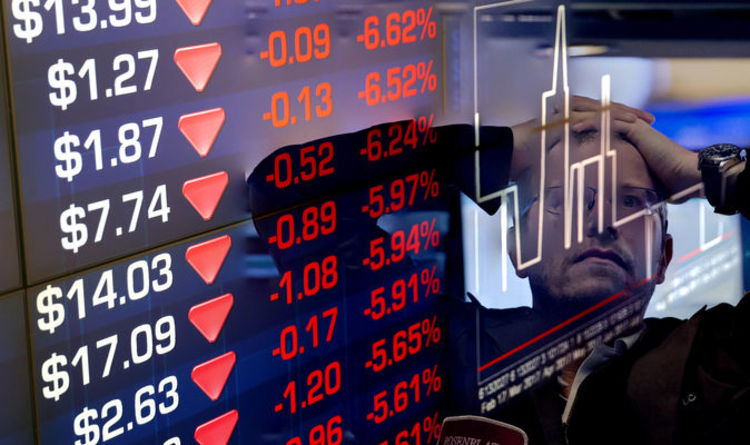The Dow Jones Industrial Average (DJIA), commonly called the Dow, is one of the maximum top-notch stock marketplace indices in the world. It represents 30 substantial publicly traded groups inside the United States and is regularly seen as a barometer of the general health of the U.S. Economy. When the Dow falls, it can create ripples of issues among buyers, policymakers, and the general public. But what motives these declines? This article will discover the various factors that contributed to the Dow’s downturns and provide insights into the complexities of stock marketplace movements.
Economic Indicators and Reports
Economic signs and symptoms are vital in influencing the Dow. Reports on employment, patron self-belief, inflation, and gross domestic product (GDP) increase offer snapshots of the economy’s health. When those signs and symptoms show signs of weakness, it can motivate a decline in investor self-assurance, prompting sell-offs that strain the Dow down. For example, a better-than-predicted unemployment charge or sluggish GDP boom can sign financial problems, causing the Dow to fall.
Corporate Earnings Reports
The economic health of the businesses that comprise the Dow additionally performs a great position in its standard overall performance. Quarterly income reviews provide a perception of how those groups are acting. If several crucial organizations record disappointing profits, it can result in a broader market sell-off, dragging the Dow down. Conversely, strong income can enhance the index, but the market’s reaction often relies upon whether or not the effects meet or exceed expectations.
Interest Rates and Federal Reserve Policies
Interest costs, set with the useful resource of the Federal Reserve (the Fed), have a profound effect on the inventory marketplace. When the Fed increases hobby rates to fight inflation, borrowing expenses for corporations and clients grow. This can cause a sluggish economic increase and decrease company earnings, leading to a decline in stock fees. Additionally, higher interest costs could make bonds more attractive than shares, prompting investors to shift their coins out of the inventory market, and causing the Dow to fall.
Geopolitical Events
Geopolitical activities, such as wars, political instability, and worldwide change tensions, can create uncertainty inside the markets. For instance, change disputes between the most crucial economies just as the U.S. And China can disrupt global supply chains and harm corporation earnings. Similarly, conflicts in key regions can cause spikes in oil fees or disruptions in vital commodities, impacting the income of Dow-indexed agencies and causing the index to drop.
Market Sentiment and Investor Behavior
Market sentiment, or the overall mindset of traders in the course of the marketplace, can stress great moves in the Dow. When customers are effective, they’ll be more likely to shop for stocks, using expenses up. Conversely, fear and pessimism can motivate enormous promotion. Various factors may affect sentiment, along with media insurance, analyst reports, or even social media developments. Herd behaviour, wherein traders observe the actions of others as opposed to their analysis, can amplify marketplace moves, leading to sharp declines in the Dow.
Technological and Sector-Specific Factors
Advancements in generation and region-particular tendencies can also impact the Dow. For instance, disruptions within the tech vicinity, which includes influential organizations like Apple and Microsoft, could have a disproportionate effect on the index. Technological upgrades can create volatility as buyers react to new dispositions, regulatory adjustments, or competitive pressures. Similarly, giant shifts in special sectors, which include healthcare or electricity, could affect the Dow’s ordinary overall performance.
External Shocks and Black Swan Events
External shocks and black swan events, which are unpredictable and characteristic of excessive results, can cause the Dow to fall. The COVID-19 pandemic is a prime instance of a black swan occasion that caused a dramatic decline in the Dow in early 2020. Natural failures, terrorist assaults, and extraordinary crises can further disrupt markets, essential to sharp declines as buyers are searching for extra stable belongings.
Valuation Concerns
Valuation worries arise when traders recall that stock charges are overinflated relative to the underlying charge of the businesses. High charge-to-income (P/E) ratios can sign that stocks are overpriced, predominant to fears of a market correction. When a great range of investors decide to take profits by using the manner of selling their holdings, it can motivate the Dow to fall. Regular tests of marketplace valuations are crucial in information capability dangers of downturns.
Algorithmic Trading and Market Mechanics
The upward thrust of algorithmic buying and promoting, in which laptop algorithms execute trades based totally on predefined standards, has brought a new layer of complexity to marketplace actions. While those algorithms can grow marketplace performance, they can also exacerbate volatility. Large-scale automated selling can occur all at once, leading to sharp declines in the Dow. Understanding the mechanics of methods when those trades are finished and their functionality effect on marketplace stability is essential for buyers.
Global Economic Conditions
The international economy is interconnected, and events in other additives of the world may have an impact on the Dow. Economic slowdowns in vital economies, which incorporate China or the European Union, may have an impact on the U.S. Businesses that depend upon worldwide markets. Currency fluctuations, modifications in worldwide name for, and global coverage picks all play a position in shaping the Dow’s universal performance.
Conclusion
The Dow’s fluctuations are the result of a complex interplay of factors, starting from monetary symptoms and corporate income to geopolitical sports and marketplace sentiment. Understanding why the Dow falls requires a complete evaluation of those factors and their interactions. By staying informed approximately the various forces at play, buyers can better navigate the uncertainties of the inventory market and make greater knowledgeable picks. While declines inside the Dow can be unsettling, they will be an inherent part of the market’s dynamics, reflecting the ever-converting nature of the worldwide monetary machine.

